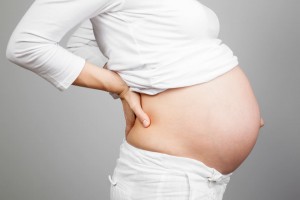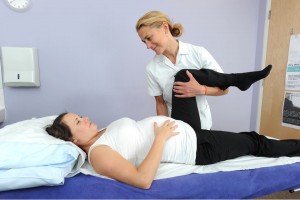Book now online or call (03) 9783 9041.
Pelvic girdle pain
What is it?
Pain presenting in the back of the pelvis is can be referred to as pelvic girdle pain or sacroiliac joint pain. The surface of where the sacrum joins on to the hip can be referred to as the sacro iliac joint. There are two joints that form the back of the pelvis.

Signs and symptoms:
- Pain in the buttock region usually on one side
- May be accompanied by generalised lower back pain or pelvis pain
- May experience pain into your hips
- Sometimes referred pain down the leg(s)
- Pain at the pubic symphysis, (or perhaps a grinding feeling)
- Not feeling confident in your back or legs to support you properly
Causes:
Your body produces a hormone called relaxin, which is produced during pregnancy. It is the softening and physical changes of your body that leads to extra stress placed on your ligaments, muscles and joints.
Treatment:
Osteopathic treatment may be of assistance by providing a variety of techniques such as soft tissue massage and joint mobilisation techniques to the hips, lower back and pelvis. Osteopaths may also offer advice with regards to carrying out your daily activities and how to look after your posture. Following pregnancy, most of this pain resolves well.Reference:Reference: Pelvic girdle pain in pregnancy. (2014). Retrieved from
http://www.babycenter.com.au/a564618/pelvicgirdlepainpgp
Sciatica
What is it?
Sciatica is nerve pain that originates from the sciatic nerve. The sciatic nerve provides sensation and function to the lower limb. This nerve travels from your lower back, down through the gluteal region, hamstrings and down into the lower leg.

Signs and symptoms
- Decreased strength in the lower extremity
- Shooting pain travelling down back of gluteal region, thigh and calf
- Pins and needles
- May be aggravated by coughing, sneezing or bearing down
- Pain in the gluteal region or buttock when sitting
Causes:
There are multiple causes of sciatica. These include lumbar disc involvement, degeneration of the spine, tight muscles in the hip area, sacroiliac joint involvement and pregnancy changes.
Treatment:
Osteopathic treatment may help to promote flexibility, posture and strength. It is important to rest and avoid aggravating factors. A combination of soft tissue therapy, joint mobilisation, trigger point release and stretching may be effective to relieve this pain. Low impact exercises such as swimming, yoga or pilates may be effective. Always try to sit and stand with good posture.References:Sciatica. (2015). Retrieved from http://www.betterhealth.vic.gov.au/bhcv2/bhcarticles.nsf/pages/Sciatica?open
Sciatica. (2015) Retrieved from http://www.osteopathy.org.au/pages/sciatica.html

